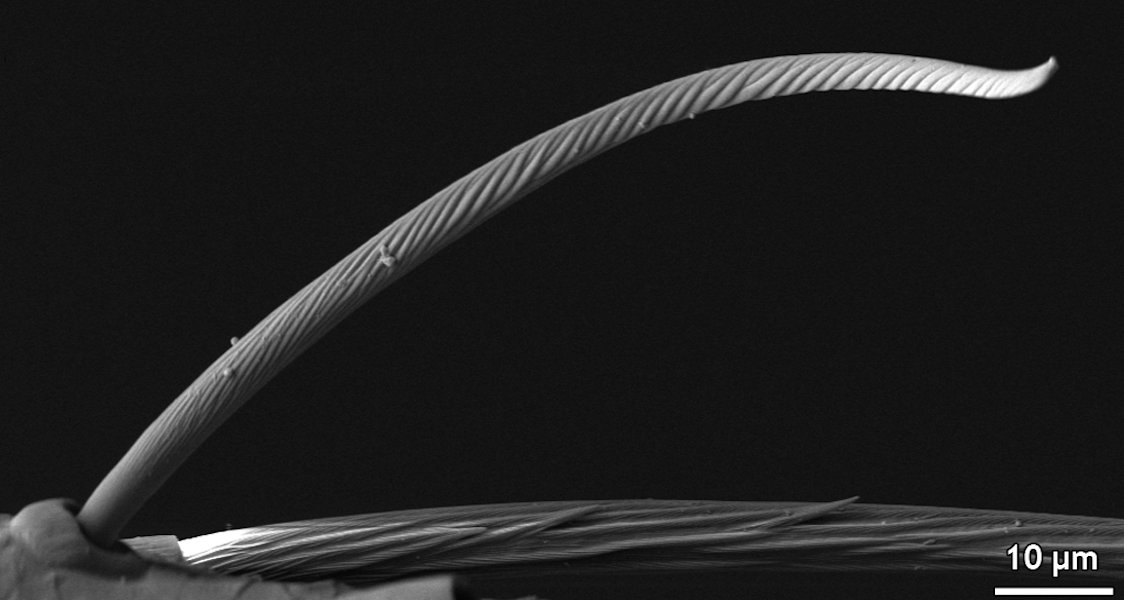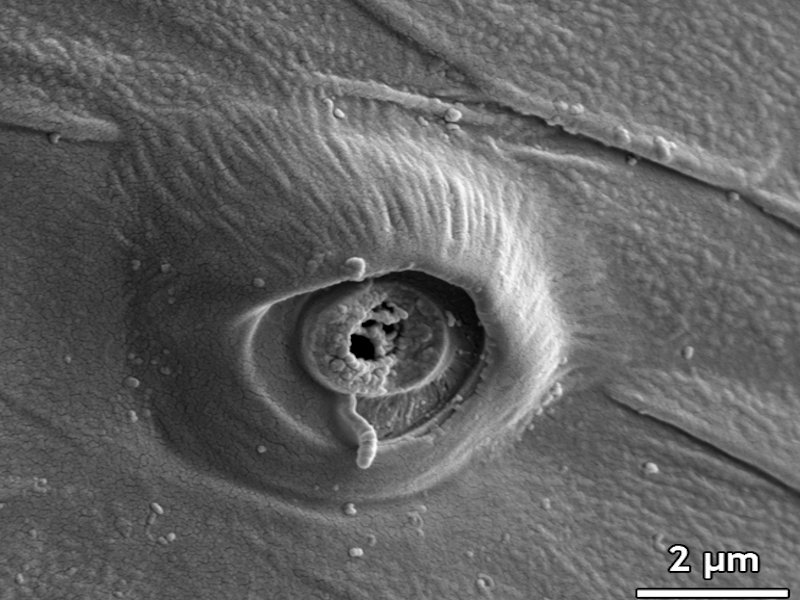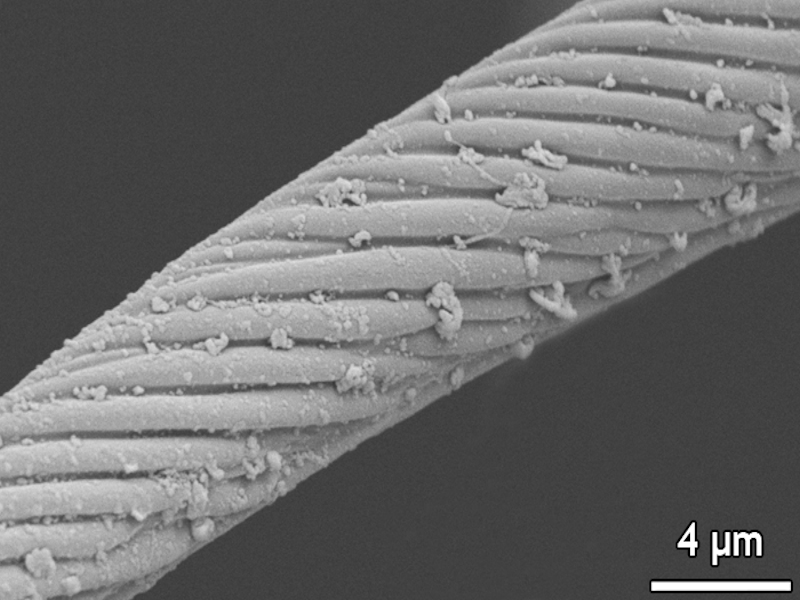Project description
We explore the role of chemical communication in spiders. Behavioural observations clearly demonstrate that male spiders are attracted to females from a far. We investigated the sexual pheromone of the wasp spider Argiope bruennichi whose biology we are particularly interested in since it shows strong sexual dimorphism, sexual cannibalism, alternative mating tactics and rapid range expansion (see related research topics on our homepage).
The pheromone of A. bruennichi was identified, synthesized and tested in the field in close cooperation with Stefan Schulz. Adult virgin females, not subadult or molting females, emit the pheromone. The dynamics of pheromone production as well as possible manipulation of the female signaling by the male are currently investigated.
Although spiders use olfactory signals and cues for mate attraction, detection of prey and predators, it remains unsolved how spiders receive the volatile substances. Candidate structures are sensilla with a terminal pore – these sensilla are known to be used for taste (gustation). We did not find multiporous sensilla that are responsible for olfaction in insects. A sensilla map for A. bruennichi corroborates that there is only one type of sensilla for chemical sensing in spiders. We investigate by means of transmission electron microscopy if the sensilla differ in internal composition. Electrophysiological tests as well as investigations on receptor proteins are on the way in collaboration with the pheromone group in Lund.
Collaboration partners:
Anne-Sarah Ganske, Naturhistorisches Museum Wien
Jutta Schneider, Universiät Hamburg
- Fischer A.; Schulz S.; Ayasse, M.; Uhl, G. 2021. Pheromone communication among sexes of the garden cross spider Araneus diadematus. The Science of Nature 108: 38 Link
- Adams, S.A.; Gerbaulet, M.; Schulz, S.; Gillespie, R.G.; Uhl, G. 2021. Chemical species recognition in a Tetragnatha spider (Araneae: Tetragnathidae). Journal of Chemical Ecology 47:63-72. doi: 10.1007/s10886-020-01237-8
- Müller, C. H. G.; Ganske A.-S.; Uhl, G. 2020. Ultrastructure of chemosensory tarsal tip-pore sensilla of Argiope spp. Audouin, 1826 (Chelicerata: Araneae: Araneidae). Journal of Morphology 281:1634–1659. DOI: doi.org/10.1002/jmor.21276 PDF
- Ganske, A.-S.; Uhl, G. 2018. The sensory equipment of a spider – a morphological survey of different sensilla types in both sexes of Argiope bruennichi (Araneae, Araneidae). Arthropod Structure and Development 47: 144-161. doi.org/10.1016/j.asd.2018.01.001.
- Chinta, S. P.; Goller, S.; Uhl, G.;Schulz, S. 2016. Identification and synthesis of branched way-type esters, novel surface lipids from the spider Argyrodes elevatus (Araneae: Theridiidae). Chemistry and Biodiversity 13: 1202-1220.
- Uhl, G.; Zimmer, S. M.; Renner, D.; Schneider, J. M. 2015. Exploiting a moment of weakness: male spiders escape sexual cannibalism by copulating with moulting females. Scientific Reports 5:16928, DOI: 10.1038/srep16928
- Uhl, G. 2013. “Spider olfaction: Attracting, detecting, luring and avoiding”. Pp. 141-158 in: Nentwig, W. (Ed.) Spider Ecophysiology Springer, Heidelberg.
- Uhl, G.; Elias, D. 2011. “Communication” Pp. 127-189 in: Herberstein, ME. (Ed.) Spider Behaviour: Versatility and Flexibility. Cambridge University Press.
- Chinta, S.P.; Goller, S.; Lux, J.; Funke S.;Uhl, G., Schulz, S. 2010. The Sex Pheromone of the Wasp Spider Argiope bruennichi. Angewandte Chemie Int. Ed. 49, 2033-2036.



